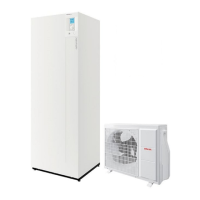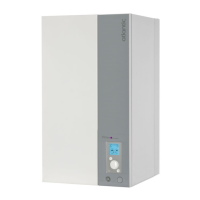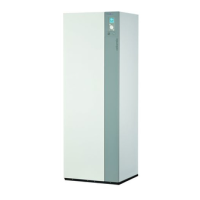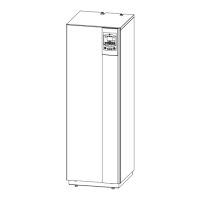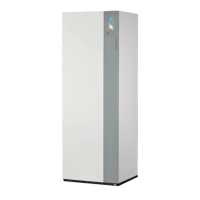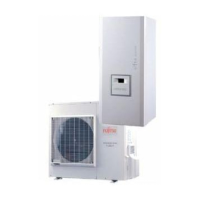" This appliance uses refrigerant R410A.
Comply with the legislation on handling of refrigerants.
3.1 Rules and precautions
" Connections must be made on the same day the
installation is lled with gas (see para. "Filling
the installation with gas", page 28).
• Minimum tools required
- Set of pressure gauges (Manifold) with hoses
exclusively designed for HFCs (Hydrouorocarbons).
- Vacuum gauge with isolation valves.
- Vacuum pump specically for HFCs (using a standard
vacuum pump is allowed if, and only if, it is tted with
a non-return valve on the suction side).
- Flaring tool, Pipe-cutter, Deburring tool, Spanners.
- Certied refrigerant leak detector (sensitivity 5g/year).
" Using tools that have been in contact with
HCFCs (R22 for example) or CFCs is prohibited.
" The manufacturer declines any liability with
regard to the warranty if the above instructions
are not observed.
• Flared connections
" Lubricating with mineral oil (for R12, R22)
is prohibited.
- Lubricate only with polyolester oil (POE). If POE is not
available, t without lubrication.
Coat the ared surface with POE
refrigeration oil.
Do not use mineral oil.
• Brazing the refrigeration circuit (if necessary)
- Silver brazing (40% minimum recommended).
- Brazing only with dry nitrogen internal ux.
• Other remarks
- After each maintenance operation on the refrigeration
circuit and before nal connection, take care to put
the caps back in position to avoid any pollution of the
refrigeration circuit.
- To eliminate any lings getting into the pipes, use dry
nitrogen to avoid introducing any humidity that may
adversely aect the appliance's operation. In general,
take every precaution to avoid humidity penetrating
into the appliance.
- Proceed with thermal insulation of the gas and liquid
pipes to avoid any condensation. Use pipe insulators
resistant to temperatures over 90°C. In addition, if the
humidity level in areas where the refrigerant pipes are
installed is expected to exceed 70%, protect the pipes
with pipe insulators. Use an insulating material thicker
than 15mm if the humidity level reaches 70 ~ 80%,
and an insulating material thicker than 20mm if
the humidity exceeds 80%. If the recommended
thicknesses are not observed under the conditions
described above, condensation will form on the
surface of the insulation material. Lastly, use insulating
sleeves whose thermal conductivity will be less than
or equal to 0.045 W/mK if the temperature is equal to
20°C. The insulation must be impermeable in order to
withstand the passage of vapour during the defrosting
cycles (glass wool is prohibited).
3.2 Shaping the refrigeration pipes
3.2.1 Bending
The refrigeration pipes must be shaped only on a
bending machine or with a bending spring in order to
avoid any risk of crushing or breaking them.
" Warning!
• Remove the insulation material from the section of
pipe to be bent.
• Do not bend copper to an angle greater than 90°.
• Never bend pipes more than 3 times in the same place
otherwise traces of fracturing may appear (hardening
of the metal).
3 Refrigeration connections
and lling the installation with gas
Installation manual "1872 - EN"
Alféa Extensa A.I. Heat Pump
- 24 -
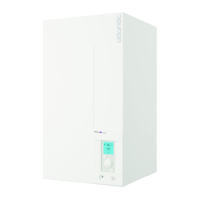
